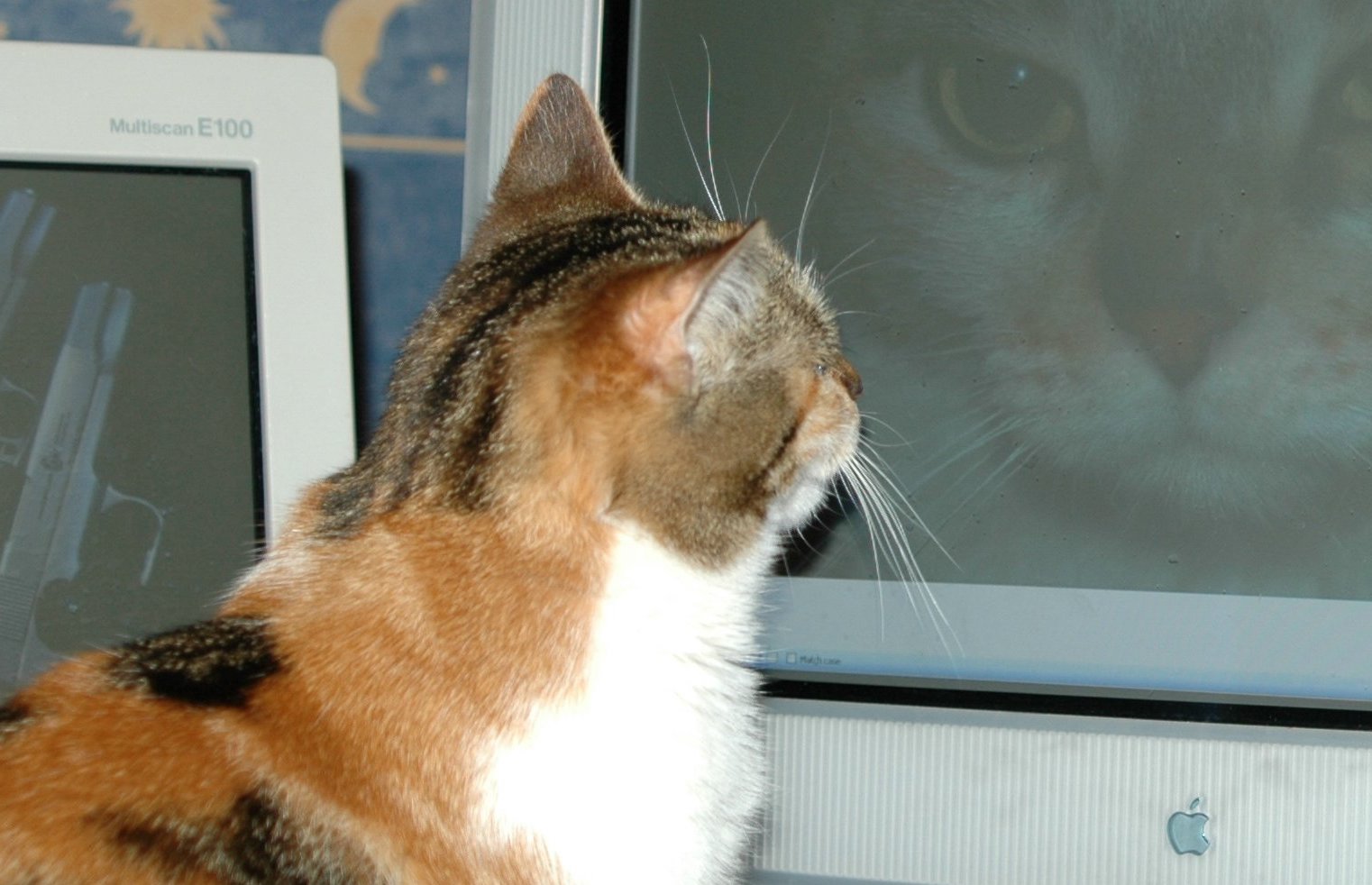This is a quick example of how to configure Nvidia GPGPU pass through to a Linux KVM VM.
This guid is for Intel hardware, but a similar approach can be take for AMD.
If successful, as a simple example, you should be able to do something like this from with the KVM VM:
$ nvidia-smi
+-----------------------------------------------------------------------------+
| NVIDIA-SMI 390.138 Driver Version: 390.138 |
|-------------------------------+----------------------+----------------------+
| GPU Name Persistence-M| Bus-Id Disp.A | Volatile Uncorr. ECC |
| Fan Temp Perf Pwr:Usage/Cap| Memory-Usage | GPU-Util Compute M. |
|===============================+======================+======================|
| 0 Tesla M2090 Off | 00000000:04:00.0 Off | 0 |
| N/A N/A P0 74W / N/A | 0MiB / 5301MiB | 0% Default |
+-------------------------------+----------------------+----------------------+
| 1 Tesla M2090 Off | 00000000:42:00.0 Off | 0 |
| N/A N/A P0 77W / N/A | 0MiB / 5301MiB | 0% Default |
+-------------------------------+----------------------+----------------------+
+-----------------------------------------------------------------------------+
| Processes: GPU Memory |
| GPU PID Type Process name Usage |
|=============================================================================|
| No running processes found |
+-----------------------------------------------------------------------------+
Here are some links that while not providing me with the solution, gave me some information to point me in the right direction.
Configure GPU Passthrough for Virtual Machines:
https://www.server-world.info/en/note?os=CentOS_7&p=kvm&f=10
KVM: Testing cloud-init locally using KVM for an Ubuntu cloud image:
https://fabianlee.org/2020/02/23/kvm-testing-cloud-init-locally-using-kvm-for-an-ubuntu-cloud-image/
PCI passthrough:
https://pve.proxmox.com/wiki/Pci_passthrough
Virtual machines with PCI passthrough on Ubuntu 20.04, straightforward guide for gaming on a virtual machine:
https://mathiashueber.com/pci-passthrough-ubuntu-2004-virtual-machine/
Cloud Config Examples:
https://cloudinit.readthedocs.io/en/latest/topics/examples.html
Using Cloud Images With KVM:
https://serverascode.com/2018/06/26/using-cloud-images.html
Required hardware:
- Nvidia Cuda cable GPU
- Intal / AMD IOMMU Enablement in BIOS
- Intel / AMD IOMMU Enablement in grub
Required software:
- KVM
- Nvidia Drivers
- Nvidia Toolkit and Samples (optional)
A reboot is required to install Nvidia drivers
This example does the following:
- Determine Nvidia PCI Device IDS
- Enable IOMMU and pass management of devices to vfio
- Disable Nvidia drivers on host
- Install KVM
- Determine Nvidia PCI IDs
- Create KVM VM
- Install Nvidia drivers in KVM VM
This requires you enable IOMMU ot VT-d in BIOS.
Determine Nvidia PCI IDs:
$ lspci |grep -i nvidia
04:00.0 3D controller: NVIDIA Corporation GF110GL [Tesla M2090] (rev a1)
04:00.1 Audio device: NVIDIA Corporation GF110 High Definition Audio Controller (rev a1)
42:00.0 3D controller: NVIDIA Corporation GF110GL [Tesla M2090] (rev a1)
42:00.1 Audio device: NVIDIA Corporation GF110 High Definition Audio Controller (rev a1)
Determine Nvidia PCI Device IDs
$ lspci -ns 04:00.0 |awk '{print $3}'
10de:1091
$ lspci -ns 04:00.1 |awk '{print $3}'
10de:0e09
Enable IOMMU and pass management of devices to vfio in grub:
cat /etc/default/grub |grep iommu
GRUB_CMDLINE_LINUX="intel_iommu=on iommu=pt intremap=no_x2apic_optout vfio-pci.ids=10de:1091,10de:0e09"
The key parts in this are:
intel_iommu=on iommu=pt vfio-pci.ids=10de:1091,10de:0e09
You may need additional handling to deal with X2APIC alerts/messages:
intremap=no_x2apic_optout
Update GRUB:
$ sudo update-grub
Disable nvidia drivers:
$ sudo sh -c 'echo "blacklist nvidia" >> /etc/modprobe.d/blacklist.conf'
$ sudo sh -c 'echo "blacklist nvidia_uvm" >> /etc/modprobe.d/blacklist.conf'
$ sudo sh -c 'echo "blacklist nvidia_drm" >> /etc/modprobe.d/blacklist.conf'
$ sudo sh -c 'echo "blacklist nvidia_modeset" >> /etc/modprobe.d/blacklist.conf'
$ sudo sh -c 'echo "blacklist nouveau" >> /etc/modprobe.d/blacklist.conf'
Update vfio config:
$ sudo sh -c 'echo "options vfio-pci ids=10de:1091,10de:0e09 disable_vga=1" > /etc/modprobe.d/vfio.conf'
Reboot:
$ sudo reboot
After reboot you should see vfio mention the PCI ID of the Nvidia GPU in dmesg or /proc/interrupts:
$ sudo dmesg |grep vfio |grep add
[ 9.601364] vfio_pci: add [10de:1091[ffffffff:ffffffff]] class 0x000000/00000000
[ 9.653456] vfio_pci: add [10de:0e09[ffffffff:ffffffff]] class 0x000000/00000000
If devices are not handled by vfio you may need to allow unsafe config/interrupts:
$ sudo echo "options vfio_iommu_type1 allow_unsafe_interrupts=1" > /etc/modprobe.d/iommu_unsafe_interrupts.conf
Now we need to install KVM and associated packages:
$ sudo apt install -y qemu qemu-kvm libvirt-daemon libvirt-clients bridge-utils virt-manager
Add user to appropriate groups (e.g. kvm, libvirt, libvirt-qemu)
Grab a cloud image:
$ cd /var/lib/libvirt/images
$ sudo wget http://cloud-images.ubuntu.com/focal/current/focal-server-cloudimg-amd64.img
Copy Image and resize it:
$ sudo qemu-img convert -f qcow2 -O qcow2 focal-server-cloudimg-amd64.img nvubuntu2004vm01.img
$ sudo qemu-img resize nvubuntu2004vm01.img 50G
Create a cloud init config:
$ sudo cat nvubuntu2004vm01.cfg
#cloud-config
hostname: nvubuntu2004vm01
groups:
- nvadmin: nvadmin
users:
- default
- name: nvadmin
gecos: NvAdmin
primary_group: nvadmin
groups: users
shell: /bin/bash
passwd: PASSWORDHASH
sudo: ALL=(ALL) NOPASSWD:ALL
lock_passwd: false
packages:
- qemu-guest-agent
- net-tools
- software-properties-common
- nvidia-driver-390
- freeglut3
- freeglut3-dev
- libxi-dev
- libxmu-dev
- gcc-7
- g++-7
growpart:
mode: auto
devices: ['/']
power_state:
mode: reboot
Create static IP config:
$ cat nvubuntu2004vm01_network.cfg
version: 2
ethernets:
enp1s0:
dhcp4: false
# default libvirt network
addresses: [ 192.168.122.91/24 ]
gateway4: 192.168.122.1
nameservers:
addresses: [ 8.8.8.8,8.8.4.4 ]
Create config image/ISO for install:
$ sudo cloud-localds --network-config nvubuntu2004vm01_network.cfg nvubuntu2004vm01_cloud.img nvubuntu2004vm01.cfg
Build VM:
$ sudo virt-install --name nvubuntu2004vm01 --cpu host-passthrough --os-type linux \
--os-variant ubuntu20.04 --host-device 04:00.0 --features kvm_hidden=on --machine q35 \
--disk ./nvubuntu2004vm01.img,device=disk,bus=virtio \
--disk ./nvubuntu2004vm01_cloud.img,device=cdrom --graphics none --virt-type kvm \
--network network=default,model=virtio --import --memory 4096
The key things here are to pass the host device to the VM, and hide KVM (Nvidia drivers will fail to load if it determines it is a virtualised environment):
--host-device 04:00.0 --features kvm_hidden=on
